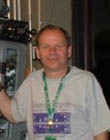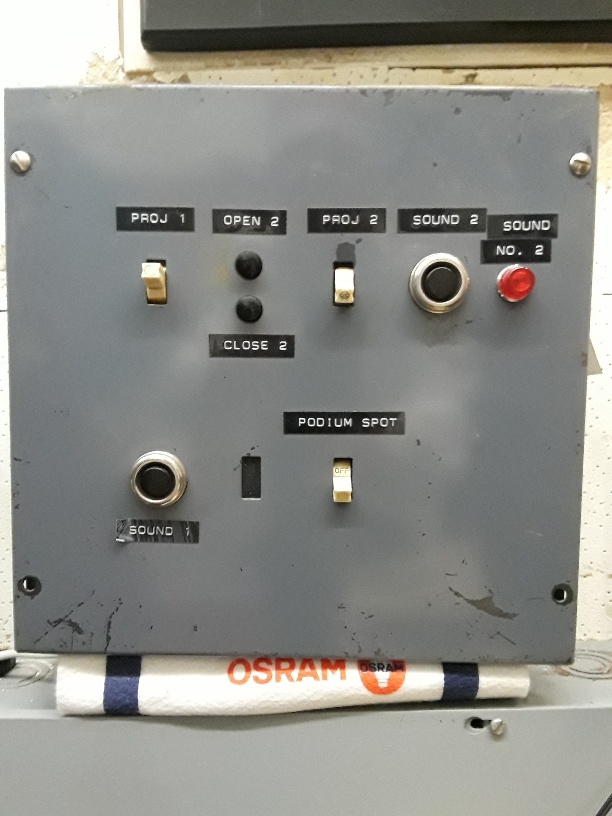|
|
 
|
|
Author
|
Topic: Change over and CP650 momentary button
|
|
|
|
|
|
|
|
|
|
|
Jim Cassedy
Phenomenal Film Handler

Posts: 1661
From: San Francisco, CA
Registered: Dec 2006
|
 posted 12-24-2019 12:38 PM
posted 12-24-2019 12:38 PM




I've always preferred to have separate buttons for picture & sound change-overs,
since there are actually times when you don't want them to happen at the same time.
That also solves the risk of somehow getting 110 (or 220)V into the processor.
Earlier this year, I re-wired a booth with an old Simplex sound system that had more
or less been taken out of service when they put the digital system in. I wanted to use
the original wall panels which not only had independent picture & sound change-over
capability, but had complete 'dual controls' duplicated next to each projector, & good,
old fashioned pilot lights to see which projector was actively connected to the processor.
I was able to make some wiring changes & re-use the original sound change-over relays,
which were formerly used to switch the exciter lamp current. On the CP-650, shorting pins
1&5 on the 9pin motor start connector forces the processor to switch to projector #2.
Un-shorting them makes it revert back to projector #1.
I re-wired the original relay contacts to do this & it's been working great. (Note- at this
location, I do not have Dolby Digital, only SR & a DTS 6D, which hasn't been used in years)
THIS IS THE PANEL BY PROJ #2. THE PANEL BY PROJ#1 IS IDENTICAL EXCEPT
THAT THE POSITION OF THE SWITCHES & BUTTONS FOR THE PROJECTORS
ARE REVERSED SO YOU ARE ALWAYS MAKING THE SAME HAND MOTIONS
FOR CHANGEOVERS NO MATTER WHICH MACHINE YOU ARE WORKING AT

| IP: Logged
|
|
|
|
|
|
|
|
|
|
All times are Central (GMT -6:00)
|
|
Powered by Infopop Corporation
UBB.classicTM
6.3.1.2
The Film-Tech Forums are designed for various members related to the cinema industry to express their opinions, viewpoints and testimonials on various products, services and events based upon speculation, personal knowledge and factual information through use, therefore all views represented here allow no liability upon the publishers of this web site and the owners of said views assume no liability for any ill will resulting from these postings. The posts made here are for educational as well as entertainment purposes and as such anyone viewing this portion of the website must accept these views as statements of the author of that opinion
and agrees to release the authors from any and all liability.
|

 Home
Home
 Products
Products
 Store
Store
 Forum
Forum
 Warehouse
Warehouse
 Contact Us
Contact Us




 Printer-friendly view of this topic
Printer-friendly view of this topic














